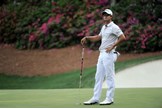R&A And USGA Announce Final Approval On Anchoring Ban
Published: Last updated:
Golf’s governing bodies have today announced the adoption of Rule 14-1b – that prohibits anchoring the club in making a stroke – will take effect on January 1, 2016.
Rule 14-1b was given the final approval by the USGA and The R&A following an extensive review by both organisations, after a comprehensive process in which comments and suggestions from across the golf community were collected and thoroughly considered.
The USGA and The R&A have prepared a detailed report to explain the reasons for the decision to adopt Rule 14-1b. The report explains the principles on which the Rules of Golf are founded, why freely swinging the entire club is the essence of the traditional method of stroke, and why anchoring is a substantially different form of stroke that may alter and diminish the fundamental challenges of the game.
It points out that the Rule 14-1b still allows for the continued use of all conforming golf clubs, including belly-length and long putters, provided such clubs are not anchored during a stroke.
The report concludes that the new Rule should not adversely affect participation in the game, that it is not too late or unfair to require players to comply with it and that it will remove concerns about any potential advantage that anchoring provides. It also makes clear that one set of Rules is essential to the future health of the game.
“Having considered all of the input that we received, both before and after the proposed Rule was announced, our best judgment is that Rule 14-1b is necessary to preserve one of the important traditions and challenges of the game – that the player freely swing the entire club,” said USGA President Glen Nager.
“The new Rule upholds the essential nature of the traditional method of stroke and eliminates the possible advantage that anchoring provides, ensuring that players of all skill levels face the same challenge inherent in the game of golf.”
Peter Dawson, Chief Executive of The R&A said: “The report published today gives a comprehensive account of the reasons for taking the decision to adopt the new Rule and addresses the concerns that have been raised. We recognise this has been a divisive issue but after thorough consideration we remain convinced that this is the right decision for golf.”
David Rickman, Executive Director of Rules and Equipment Standards at The R&A, said: “This Rule change addresses the future and not the past. Everyone who has used an anchored stroke in the past, or who does so between now and January 1, 2016, will have played entirely within the Rules and their achievements will in no way be diminished.”
“The discussion around the Rule has been very helpful, and we appreciate that so many different perspectives were offered,” said USGA Executive Director Mike Davis. “We know that not everyone will agree with the new Rule, but it is our hope that all golfers will accept that this decision is reasoned and motivated by our best judgment in defining the sport and serving the best interests of the game.”
For more information about the adopted Rule, visit www.RandA.org/anchoring.
The new Rule will be established as follows:
In making a stroke, the player must not anchor the club, either “directly” or by use of an “anchor point.”
Note 1: The club is anchored “directly” when the player intentionally holds the club or a gripping hand in contact with any part of his body, except that the player may hold the club or a gripping hand against a hand or forearm.
Note 2: An “anchor point” exists when the player intentionally holds a forearm in contact with any part of his body to establish a gripping hand as a stable point around which the other hand may swing the club.

